Tetris

| a game by | Dr. Pepper Studio, and Tengen |
| Genres: | Arcade Classics, Puzzles & Words |
| Platforms: |
|
| Editor Rating: | 9/10, based on 4 reviews, 5 reviews are shown |
| User Rating: | 9.0/10 - 2 votes |
| Rate this game: | |
| See also: | Best Casual Games, Retro Games, Top Grossing Games, Tetris Games |
- Manufacturer: Tengen;
- Machine: Nintendo
At first glance Tetris looks like one dull game, but once you try it, you'll find it hard to put your game controller down. I've been hooked on this game ever since I saw it many months ago, becoming a hermit Tetroid in the process.
The game looks simple enough. You start with an empty bin into which drops one piece at a time. The pieces come in five geometric designs: a straight line, a T shape, a box, an L shape and a zig-zag, each made up of four small blocks. The L shape and zig-zag have a reverse image of each, so that in total there are really seven different shapes.
By rotating each piece into the best placement possible so it meshes with the pieces already in the bin, you try to complete rows. When a row is complete with no gaps across, it disappears. Clearing multiple rows with one-piece placement brings more points, with the ultimate being the elimination of four rows, called a "Tetris". As with similar strategy games, the action speeds up as you go along. It ends when, because of too many gaps, your bin fills up to the playfield.
In the one-player game, you use the left-hand portion of the screen, while the computer keeps track of how many of each piece you have received, displaying them on the right side. Other options let you play against the computer - which is surprisingly easy to beat - or against another player. The two-player game is the best way to go, with each player using one side of the screen; but a cooperative level allows two players (or one person and the computer) to team up on one big screen. The cooperative mode probably won't hold your interest very long: the computer is too slow as a partner, and a cooperative two-player game isn't nearly as fun as competing against one another.
What this version of Tetris lacks are the detailed colored backgrounds that the home computer versions feature. What you gain instead are neat little intermissions with score bonuses - a big plus in my book - and little dancing Russian figures. The latter provide a little bit of atmosphere and authenticity, because the game was originally authored in Russia by a researcher and an 18-year-old programmer.
Tengen's version of Tetris has the best graphics of any home version of the game. The blocks are textured, which gives them some depth. The speed at which the blocks fell is also somewhat under your control, a feature not found in most of the computer versions. And the game allows you to select from four Soviet-type tunes, or none at all if you get distracted by video-game music. Starting at higher levels with an individual player handicap is also selectable.
If you are looking for something different and challenging, plus the rare ability to allow two players to compete simultaneously, then Tetris is for you. It's also a departure from the endless string of scrolling shoot 'em ups that are being released these days. Frankly it's one of the most frequent sounds heard echoing through the halls of VG&CE.
Download Tetris

System requirements:
- PC compatible
- Operating systems: Windows 10/Windows 8/Windows 7/2000/Vista/WinXP
- Game modes: Single game mode
Player controls:
- Up, Down, Left, Right - Arrow keys
- Start - Enter (Pause, Menu select, Skip intro, Inventory)
- "A" Gamepad button - Ctrl (usually Jump or Change weapon)
- "B" button - Space (Jump, Fire, Menu select)
- "C" button - Left Shift (Item select)
Use the F12 key to toggle mouse capture / release when using the mouse as a controller.

System requirements:
- PC compatible
- Operating systems: Windows 10/Windows 8/Windows 7/2000/Vista/WinXP
- P-200, 32 MB RAM

System requirements:
- PC compatible
- Operating systems: Windows 10/Windows 8/Windows 7/2000/Vista/WinXP
Game Reviews
- Manufacturer: Spectrum Holobyte
- Versions: Amiga, Apple II, Apple IIGS, Commodore 64, IBM PC, Macintosh 512 and SE, Macintosh II
- Theme: Strategy
Someday, gaming scholars may study Tetris the way people now analyze chess. The first Russian-designed game, authored by researcher Alexey Pazhitnov, is a classic intellectual challenge. Its simple rules should not blind players to its immense strategic complexities. In many ways, chess is the best comparison. Tetris is harder to discuss than chess, because the former is so new that there is no lexicon of terms or fat books of openings.
There are six different pieces in the game. Each type is an arrangement of four connected Blocks (little squares). This isn't as easy to see on the Commodore, because of the system's graphic limitations, but piece structure is the same for all editions of the contest.
- The pieces are:
- The Square: Four blocks set in a 2x2 pattern.
- The Bar. Four blocks connected horizontally in a 1x4 configuration.
- Left Bracket: Three blocks piled vertically with another adjacent to the right face of the bottom block in the stack.
- Right Bracket. Three blocks piled vertically with another adjacent to the left face of the bottom block in the stack.
- The Tee: A vertical pile of three blocks with the fourth adjacent to either the left or right face of the block in the middle of the stack.
- The Zig: Two horizontal blocks with another pair of horizontal blocks adjacent to them. The top face of the right block of the lower pair is adjacent to the bottom face of the left block of the upper pair.
- The Zag: Two horizontal blocks with another pair of horizontal blocks adjacent to them. The top face of the left block of the lower pair is adjacent to the bottom face of the right block of the upper pair.
- Filling the Bin (the rectangle into which pieces drop) with solid rows of blocks requires attention to the geometry of the pieces. Although the order and frequency of the pieces changes every game, there are no bizarre shapes to confound the participant's plans.
Placing each piece so there is a place for the next one, regardless of shape, is the main goal. Nothing ends the game faster than three or four consecutive pieces which have no corresponding spot in the Bin. Once pieces stack up, the end of the game is in sight.
Two of the program's features can help: the tournament mode and the "next piece" option. The former repeats the previous sequence of pieces, while the latter previews the shape of the piece that comes after the one currently inching down the screen.
Notice how certain placements leave room for subsequent pieces, while others cause gaps in the rows. When there are several available positions, visualize the Bin after each possibility. The best moves keep all, or at least most, placement possibilities open.
The Zig and the Zag show up often and are the hardest to place. Always reserve spots in the Bin for both types of piece on every turn.
Another Zig and Zag problem is that these pieces have a propensity to pile up quickly even when there are places to put them. The best solution is to find a second spot to stick the too-numerous Zigs or Zags instead of arranging them in a slim tower.
The greater the distance a piece falls when dropped, the more points it generates. Develop an eye for accurately estimating where each new piece lies on the horizontal axis as soon as it appears at the top of the Bin to maximize the distance it can fall.
Keep the rows close to the bottom of the Bin. When the speed shifts into overdrive, the player needs room to rotate and move pieces. If the new piece can drop the equivalent of four or five squares before encountering existing pieces, it is nearly impossible to place it correctly.
Only the Bar can fill a three- or four-block gap. When this situation exists, nudging the Bar into the void is an obvious move. The Bar can also throw unwary Tetris players a real curve. Standing the Bar on end sometimes produces a hard-to-fill area.
A poker player must know when to drop a bluff, and a Tetris master needs a feel for when to quit waiting for the perfect piece. If the row level rises alarmingly, drop a few pieces to close off existing gaps and start fresh further up the screen.
This can be preferable to the slower death of allowing stacks of uncompleted rows to accumulate. It adds a few rows in the short run, but it also helps the player get the situation under control. The partial rows will still be there, but sometimes the draw turns more promising.
Beating this addictive invader from Eastern Europe requires some practice and a grasp of the spatial interrelation among the six Tetris shapes. Achieving that insight is a long, though highly entertaining, process.
- Manufacturer: Nintendo of Japan
- Machine: Famicom
- Theme: Puzzle
- Release: September 1993
Here's the latest variation on Tetris from Nintendo for the 8-Bit Famicom. This is basically a mix of Tetris and Doctor Mario - pieces disappear not when rows are made, but when blocks are lined up of the same color. The blocks come in three colors, and are of totally different shape than of the original game. This really adds to the challenge. This cart is being released to help out the launch of the redesigned 8-Bit Famicom. Could this be the savior or the last gasp of the dying 8-Bit?
- Theme: Puzzle/Strategy
- Difficulty: Average
- Number of Players: 1 or 2
- Available: With GameBoy
From Russia With Love...
Tetris is the only game of 1989 that could be called revolutionary. Adapted from an original computer program developed by a Russian engineer, Tetris is deceptively easy to learn and maddeningly addictive. Despite all of the legal problems that have plagued the game in its NES form, its structure and execution make it perfect for the GameBoy system.
The basic theme of the game is to rotate five different shapes, each made up of four small blocks, in a way that locks the pieces together with no gaps in between. When a complete horizontal line is created, that line is eliminated and all blocks on top of it fall down one level. The goal is simple: keep the blocks from reaching the top of the screen where "Game Over" awaits.
Tetris combines strategy (you must eliminate four lines at once to score a big point Tetris) and has an absorbing two-player mode that lets two players go head-to-head with the Video Link.
People say:
Tetris is the perfect game for GameBoy. One which you can't finish, yet remains constantly absorbing throughout. Difficulty increases at a progressive rate and never quite becomes entirely masterable. The two-player mode shows off the Video Link like nothing else.
A fascinating game for puzzle lovers. One of the best for GameBoy. The 2-Players version is outstanding and the second 25-line mode makes it easy to play quick games by yourself. With nine speed setting and five handicaps, Tetris is a perfect match for anyone.
Possibly the best game available for the new GameBoy system. Tetris is the perfect 2-Player portable cart, with easy-to-learn, yet challenging play. The interaction in the 2-Player Video Link mode is much better than the NES version. A perfect game to kill time on long trips.
The perfect portable game. Believe it or not, the GameBoy version has the best play of all the versions. The 2-Player Video Link is good, but a cooperative option (like in the Tengen version) would have been nice. Be warned, Tetris is VERY addicting!
The first game software from the Soviet Union is an intense battle of wits. Rotate and flip moving geometric blocks into unbroken rows. When you fill up a row, it disappears from the screen and your score rises. Nothing to it, right? Wrong! When you can't find the way to make the pieces fit together and more blocks tumble down ever faster, you'll wish you had ten hands -- and ten brains. Play this addictive mind game by yourself, against a friend or against the computer.
You better stop reading now or you're liable to overheat from sheer anticipation. Save some of that energy for running to your local dealer so you can play the games today!


























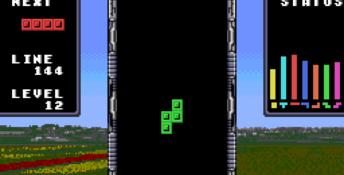






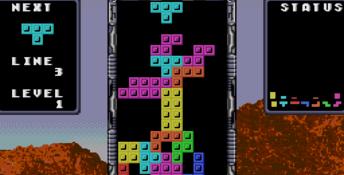















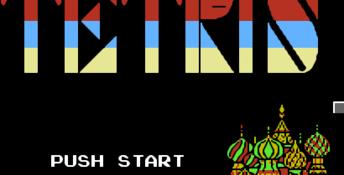




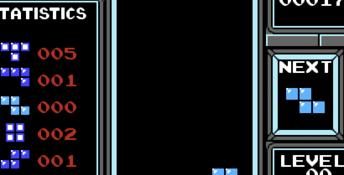




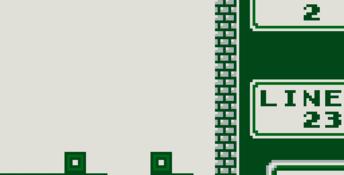










 Farmer's Life
Farmer's Life
 PICO PARK
PICO PARK
 Regular Human Workshop
Regular Human Workshop
 Spirit of the North
Spirit of the North
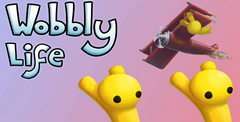 Wobbly Life
Wobbly Life
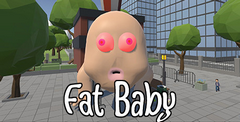 Fat Baby
Fat Baby
 The Ranch of Rivershine
The Ranch of Rivershine
 Gas Station Simulator: Early Days
Gas Station Simulator: Early Days
 Totally Accurate Battle Simulator
Totally Accurate Battle Simulator
 Super Animal Royale
Super Animal Royale
 High School Dreams
High School Dreams
 Re-Volt
Re-Volt
 Tetris 2
Tetris 2 BreakThru!
BreakThru! Block Out
Block Out Tetrisphere
Tetrisphere